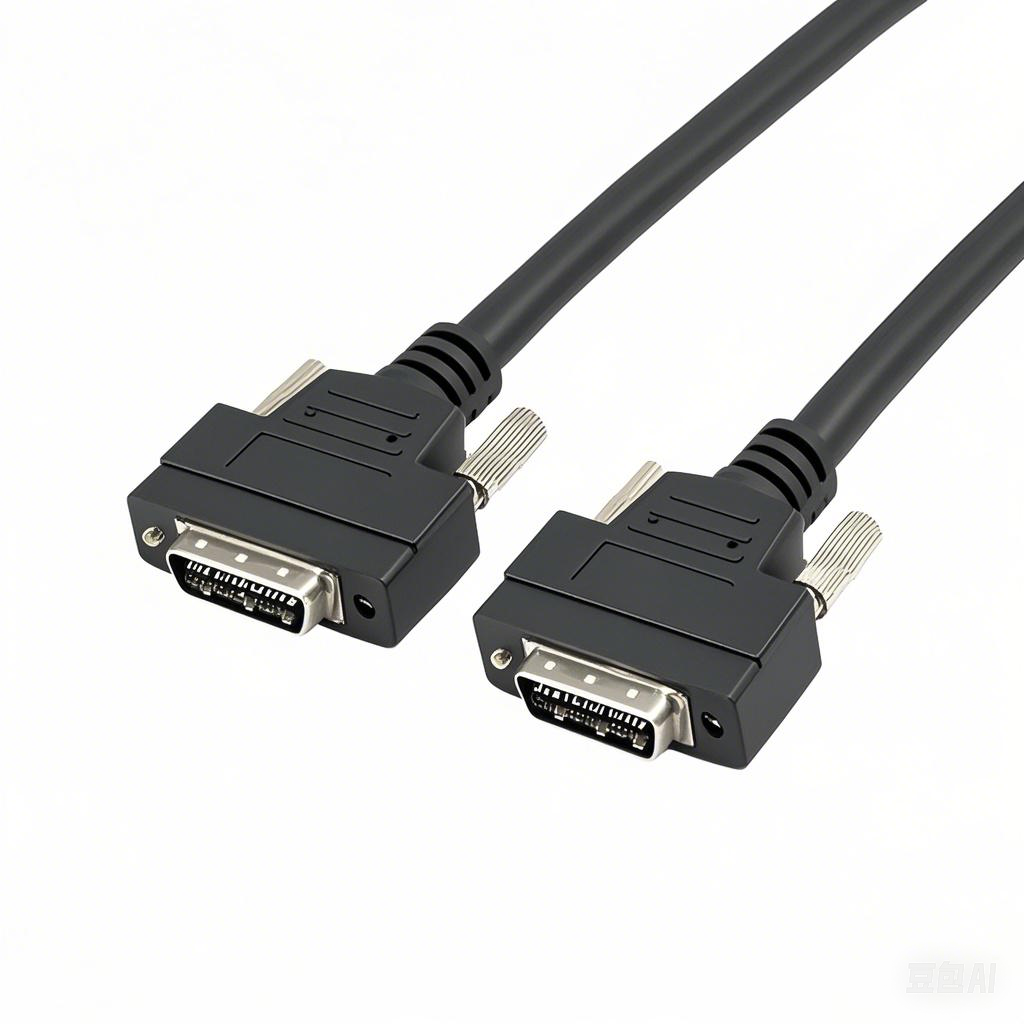How to Select Machine Vision Cables for High-Flex Applications
Machine vision systems are the eyes of modern automation, guiding robots, inspecting products, and ensuring quality. But what happens when those “eyes” need to move constantly? High-flex applications – think robotic arms, continuous motion machinery, or cable carriers (drag chains) – demand cables that can withstand relentless bending, twisting, and flexing without failing. Choosing the wrong cable leads to downtime, costly replacements, and unreliable image data. Here’s how to select the right machine vision cable for demanding, high-flex environments.
Why Standard Cables Fail in High-Flex Situations
Ordinary cables aren’t built for constant movement. Under repeated flexing:
- Conductors Break: Solid or simple stranded copper wires inside can fatigue, crack, and eventually break, causing signal loss (video dropouts, errors).
- Insulation Cracks: Stiff plastic insulation becomes brittle and cracks over time, exposing conductors and risking short circuits.
- Jackets Abrade: Standard outer jackets wear down quickly against guides or inside cable carriers.
- Connectors Loosen: Strain relief might fail, causing wires to pull out of connectors.
Key Features for High-Flex Machine Vision Cables
Look for these critical characteristics designed specifically for durability in motion:
- Flex-Rated Conductors:
- Fine Stranding: Conductors should be made from numerous very fine copper strands. This allows the wire to bend more easily with less internal stress.
- Special Stranding Patterns: Look for conductors wound in specific bundles (like bunched or rope-lay stranding) optimized to distribute bending forces evenly.
- High-Purity Copper: Oxygen-free copper (OFC) is more ductile and less prone to work-hardening and breaking.
- Flexible Insulation:
- Specialized Materials: Insulation around each conductor needs high flexibility and resistance to cracking. Thermoplastic elastomers (TPE) or specially formulated PVC blends are common choices. Avoid stiff plastics.
- Robust, Flexible Jacket:
- Abrasion Resistance: The outer jacket takes the most physical punishment. Polyurethane (PUR) is often the top choice for high-flex applications due to its exceptional flexibility, abrasion resistance, and resistance to oils and chemicals. TPEs are also good options.
- Low Coefficient of Friction: A smooth jacket surface reduces wear inside cable carriers or against guides.
- Oil & Chemical Resistance: Essential for industrial environments.
- Optimized Cable Construction:
- Layered Shielding: High-quality foil + braid shielding provides excellent EMI/RFI protection crucial for clear video signals. The shield itself must be flexible enough to withstand bending without fracturing.
- Low Compression Design: The internal components (conductors, insulation, fillers) should be packed in a way that minimizes internal friction and pinching during bending. Fillers like textile yarns help maintain cable shape and flexibility.
- Torsion Resistance: If the application involves twisting (torsion), ensure the cable is specifically rated for it. Not all high-flex cables handle twisting well.
- Strain Relief at Connectors:
- Integrated Boots: Connectors should feature flexible, overmolded strain relief boots that securely anchor the cable jacket, preventing bending stress from reaching the delicate solder joints inside the connector. Avoid simple crimped strain reliefs.
- Choosing the Right Connector Type:
- Locking Mechanisms: Use connectors with secure locking features (like screw locks – M8/M12 D-coded for GigE, M12 A-coded for some sensor power/data) to prevent vibration from loosening them. Push-pull connectors offer quick, secure connections but ensure their strain relief is robust.
- Right-Angle Options: Can help minimize bending radius and reduce stress in tight spaces, but choose versions specifically rated for flexing if movement occurs near the connector.
- Bending Radius:
- Know the Minimum: Every high-flex cable has a specified minimum bending radius (e.g., 7.5 x cable diameter). This is the smallest curve the cable can safely handle during movement. Never bend the cable tighter than this radius, even during installation. Exceeding it drastically shortens cable life.
Matching the Cable to Your Application
- Cable Carriers (Drag Chains): The gold standard for guided, repetitive motion. Choose cables explicitly rated for use in drag chains (“chain-suitable”). Pay close attention to the minimum bending radius specified for the chain itself and ensure the cable’s minimum bending radius is compatible or smaller.
- Robotic Arms: Cables experience complex 3D movement and torsion. Look for cables specifically rated for robotics or torsion, with very fine stranding and PUR jackets. Strain relief at both ends is often critical.
- Continuous Flexing without Guides: Less common, but requires cables with exceptional flexibility and internal construction designed to handle unsupported movement without kinking.
Best Practices for Installation & Longevity
- Respect the Bending Radius: This cannot be overstated. Ensure all guides, pulleys, and cable carrier radii are larger than the cable’s minimum requirement.
- Avoid Sharp Edges: Use smooth guides and protect the cable from rubbing against sharp metal or plastic parts.
- Secure Strain Relief: Ensure connectors are properly mounted and the cable jacket is firmly clamped within the strain relief boot.
- Prevent Twisting: In cable carriers, cables should lie flat and not be twisted relative to each other. Follow the carrier manufacturer’s filling guidelines.
- Allow Slack: Never install a cable taut. Allow sufficient slack for the full range of motion without pulling tight.
- Regular Inspection: Periodically check cables for signs of wear, kinking, jacket abrasion, or damage near connectors.
Conclusion
Selecting the right machine vision cable for high-flex applications is crucial for system reliability and minimizing costly downtime. Don’t settle for standard cables. Prioritize features like fine-stranded conductors, PUR or TPE jackets, robust strain relief, and a proven construction designed for continuous flexing. Always adhere strictly to the specified minimum bending radius and follow best installation practices. By investing in the right cable from the start, you ensure clear vision signals and smooth operation, even in the most demanding motion environments.











